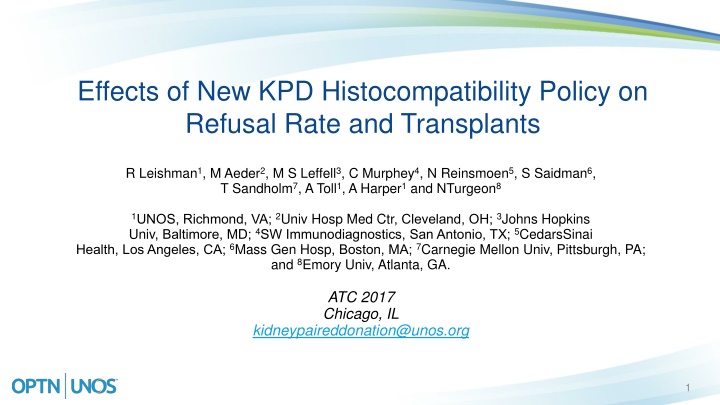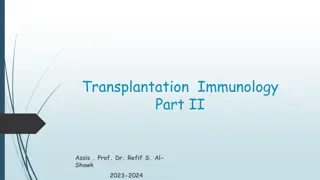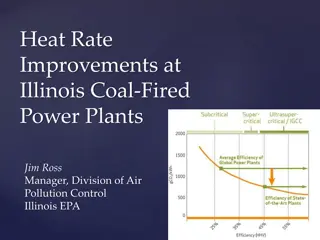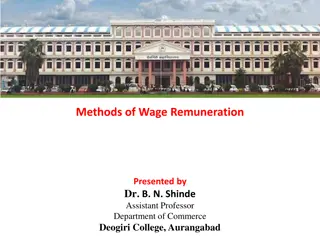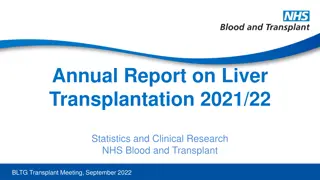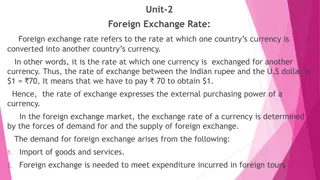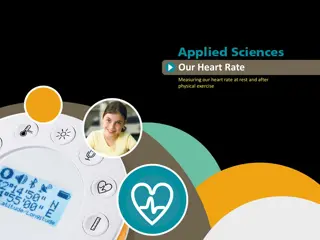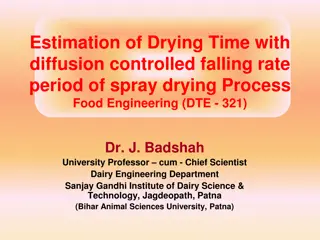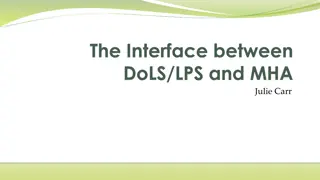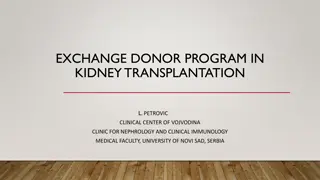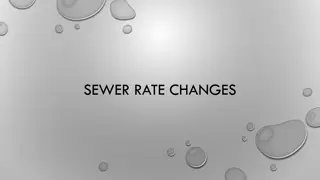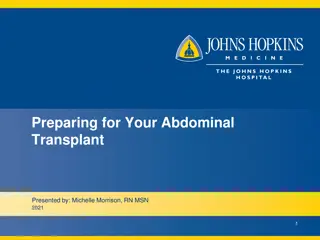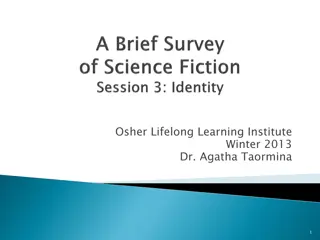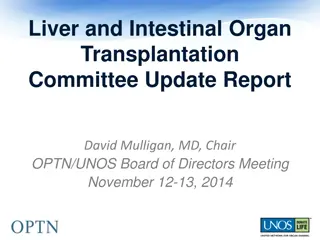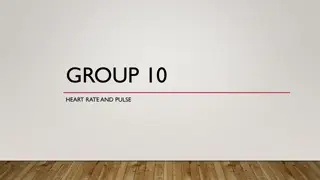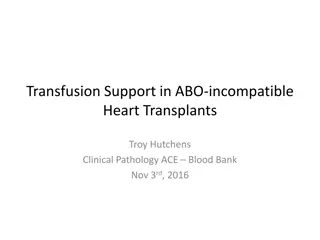Effects of New KPD Histocompatibility Policy on Refusal Rate and Transplants
This study analyzes the impacts of the new KPD histocompatibility policy on refusal rates and kidney transplants, aiming to reduce refusals related to positive crossmatches and increase success rates in match offers. The research delves into various refusal reasons and proposes solutions to improve transplantation outcomes.
Download Presentation

Please find below an Image/Link to download the presentation.
The content on the website is provided AS IS for your information and personal use only. It may not be sold, licensed, or shared on other websites without obtaining consent from the author.If you encounter any issues during the download, it is possible that the publisher has removed the file from their server.
You are allowed to download the files provided on this website for personal or commercial use, subject to the condition that they are used lawfully. All files are the property of their respective owners.
The content on the website is provided AS IS for your information and personal use only. It may not be sold, licensed, or shared on other websites without obtaining consent from the author.
E N D
Presentation Transcript
Effects of New KPD Histocompatibility Policy on Refusal Rate and Transplants R Leishman1, M Aeder2, M S Leffell3, C Murphey4, N Reinsmoen5, S Saidman6, T Sandholm7, A Toll1, A Harper1and NTurgeon8 1UNOS, Richmond, VA 2Univ Hosp Med Ctr, Cleveland, OH 3Johns Hopkins Univ, Baltimore, MD 4SW Immunodiagnostics, San Antonio, TX 5CedarsSinai Health, Los Angeles, CA 6Mass Gen Hosp, Boston, MA 7Carnegie Mellon Univ, Pittsburgh, PA; and 8Emory Univ, Atlanta, GA. ATC 2017 Chicago, IL kidneypaireddonation@unos.org 1
The Joint Annual Congress of the American Society of Transplant Surgeons and The American Society of Transplantation Ruthanne Leishman RN, MPH OPTN KPDPP Program Manager UNOS, Richmond, VA, USA I have no financial relationships with commercial interests to disclose AND My presentation does not include discussion of off-label or investigational use.
Acknowledgments This analysis reflects work performed on behalf of and in conjunction with the OPTN Kidney Transplantation Committee and the Kidney Paired Donation Work Group. This work was supported wholly or in part by Health Resources and Services Administration contract 234-2005- 370011C. The content is the responsibility of the authors alone and does not necessarily reflect the views or policies of the Department of Health and Human Services, nor does mention of trade names, commercial products, or organizations imply endorsement by the U.S. Government.
Remaining 48% (n=160) Actual Match Offer Refusals 34.4% Donor-related 32.6% Crossmatch-related 21.9% Candidate-related 13.8% Other Match Runs: Jan-Sep 2014 4
Background: Crossmatch-related refusal reasons Match Runs: Jan-Sep 2014 (n=52) Virtual +crossmatch can be due to: Non-required donor antigens not entered (HLA-DQA1, HLA-DQB1, and HLA-DPB1) Non-required donor antigens not screened Candidate unacceptable antigens not entered or updated 34.6% 65.4% Positive Virtual Crossmatch Positive Physical Crossmatch 5
Solution Implement KPD histocompatibility requirements Goals Reduce the number of match offer refusals related to positive crossmatch Increase match offer success rate (define as # of offers that results in transplantation) 6
KPD Histocompatibility requirements policy Implemented January 21, 2016 Donor HLA-DQA1, HLA-DQB1, and HLA-DPB1 required All donor HLA screened against candidate unacceptable antigens Specific candidate screening requirements Serological split level molecular typing Solid-phase single phenotype or solid-phase single-antigen test to identify unacceptables antigens Candidate unacceptables reviewed by 2 individuals, prior to first match run Retesting candidate: Every 110 days When any potentially sensitizing event occurs When reactivating a candidate, if inactive more than 90 days When a match is refused due to unacceptable physical crossmatch 7
Methods XM refusal rates were compared for pre (6/2/14 1/21/16) vs post (1/22/16 2/2/2017) policy periods. A logistic regression model analyzed match outcomes of transplanted or not transplanted, controlled for the time periods, candidate CPRA, candidate age, donor age, donor BMI, and donor ABO. 8
Results Decrease in XM related refusals Percentage of refusal reasons by category: pre vs post policy implementation 50% 44% 45% 40% 33% 32% 35% 29% 27% 30% 25% 20% 14% 13% 12% 15% 10% 5% 0% Crossmatch Candidate Donor Other Pre-policy Post-policy 9
Results Match Success Rate Univariate Analysis Pre-Policy: 5% Post-Policy: 10% p < 0.001 Logistic Model 118% increase in odds p < 0.001 Only significant factor after adjusting for other covariates 10
Discussion Decrease in refusal rate related to unacceptable crossmatches Increase in match success rate Many highly sensitized candidates became ineligible after implementation, decreasing the mean CPRA of matched candidates decreased The mean CPRA of eligible candidates is now increasing as unacceptables are updated. Longer term analysis will determine whether the increased probability of transplant resulted from the policy's intention vs ineligibility of some sensitized candidates. Further improvements to the program will be based on longer term findings. Now looking at donor-related refusal reasons 11
Thank you! 12
